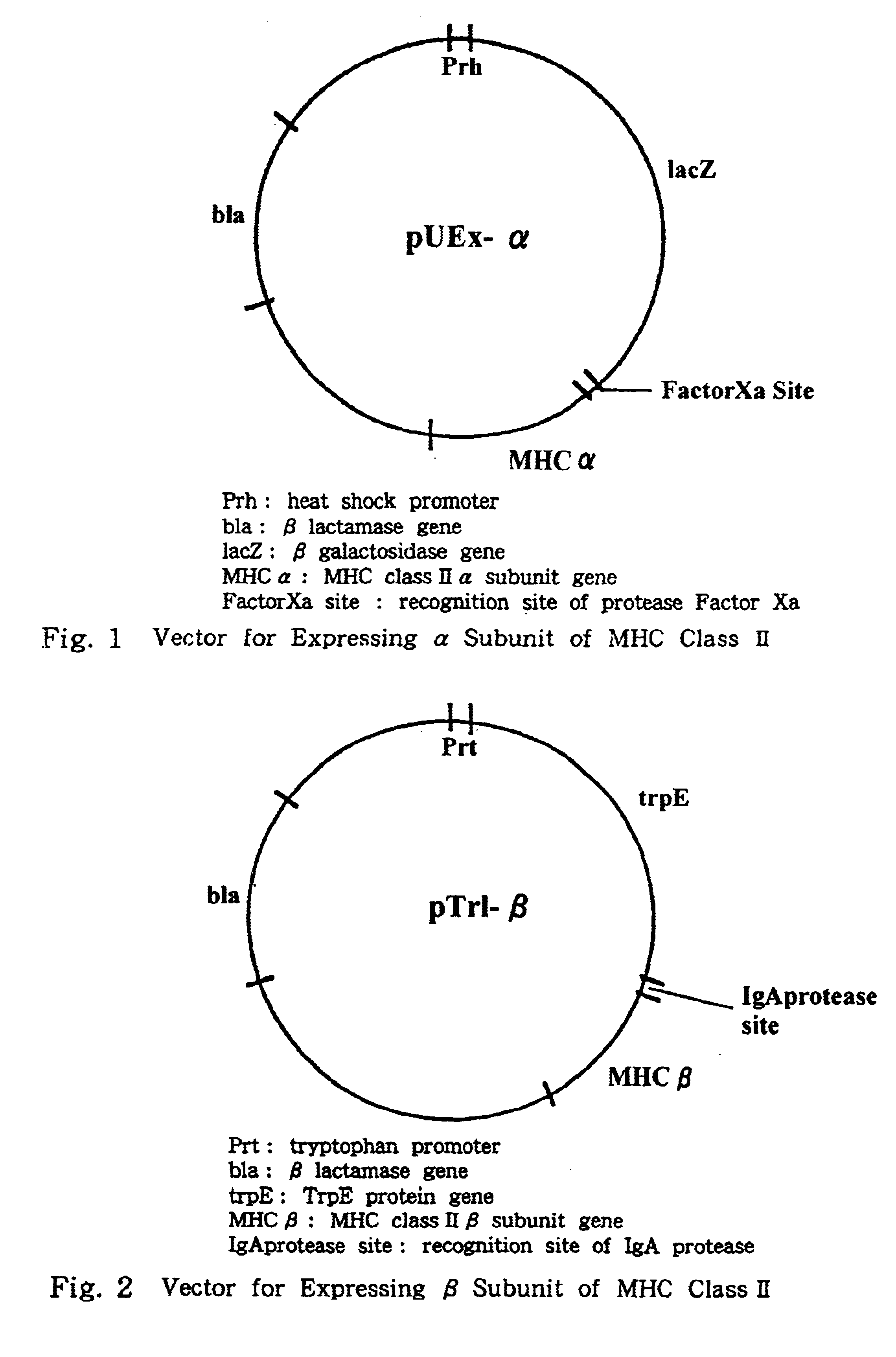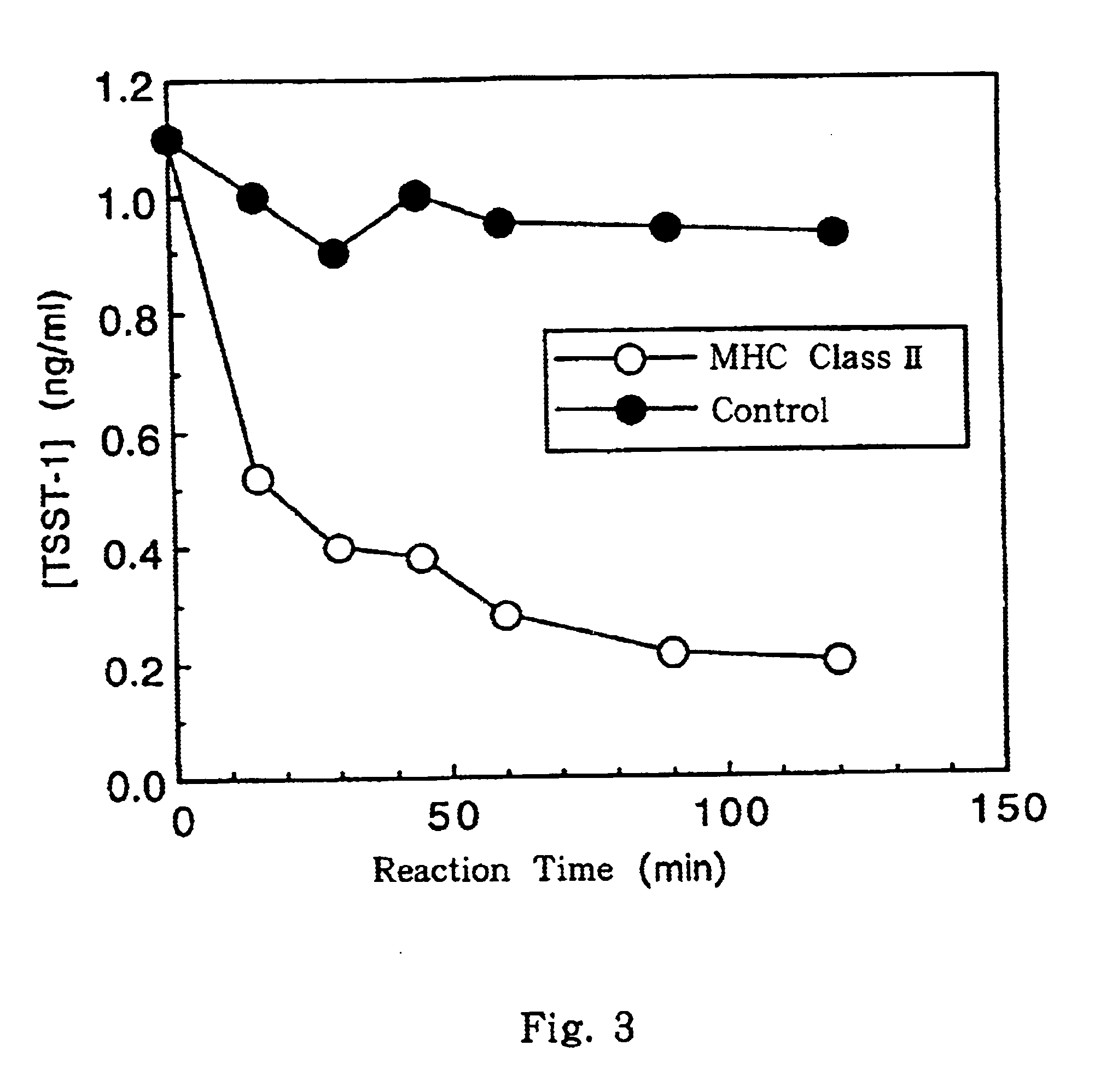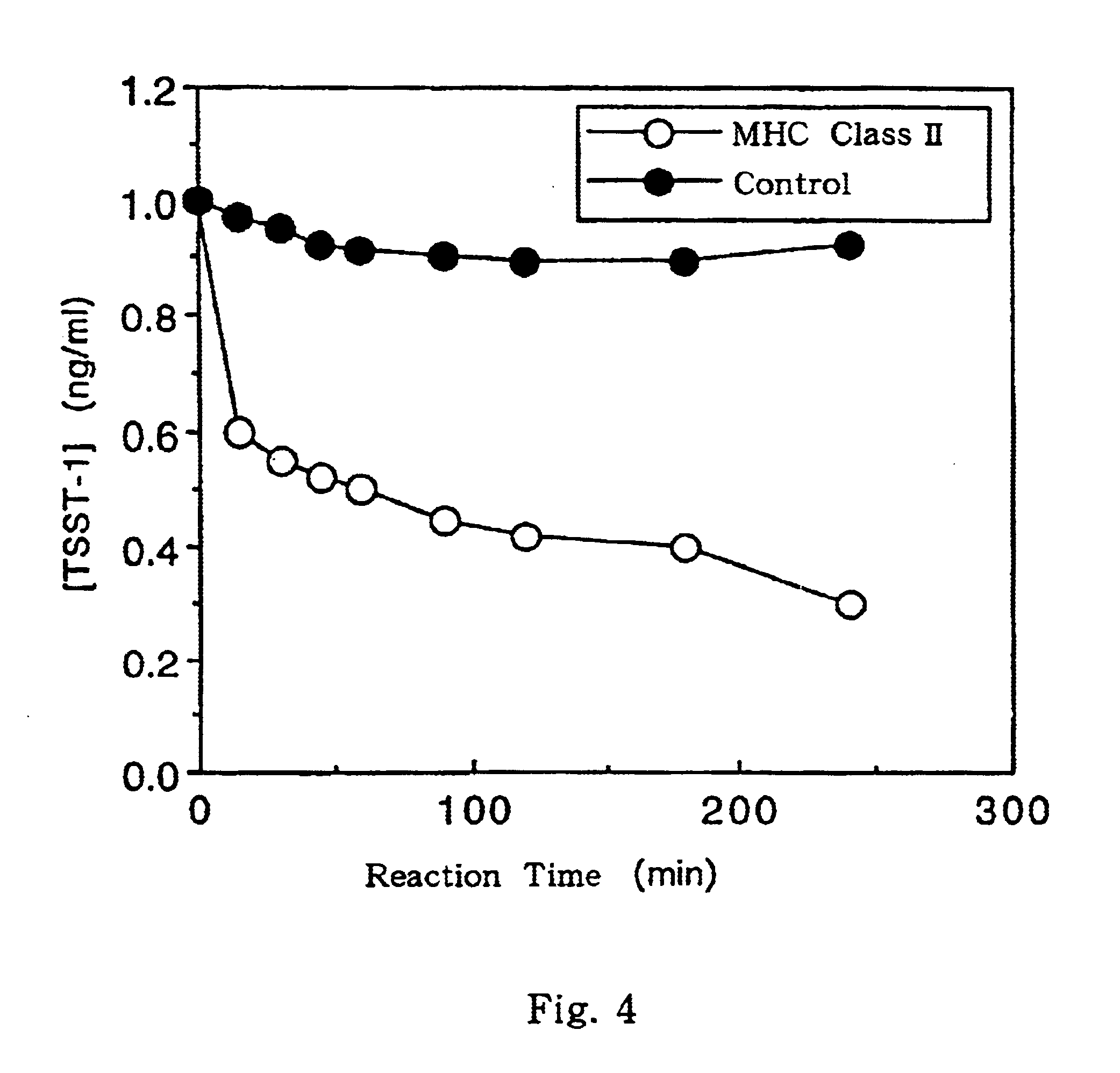Process for preparing major histocompatibility antigen class II protein and materials in which the same is bound
a technology of histocompatibility and protein, which is applied in the field of process for preparing major histocompatibility antigen class ii protein and materials, can solve the problems of protein originating from mammals not being expressed, methods taking a long time and a large cost,
- Summary
- Abstract
- Description
- Claims
- Application Information
AI Technical Summary
Benefits of technology
Problems solved by technology
Method used
Image
Examples
example 1
Expression of MHC Class II .alpha. Subunit in E. Coli
The .alpha. subunit of MHC class II was prepared as follows:
Between the Eco RI site and Xba I site of pUEF having a heat shock promoter, a sequence encoding .beta. galactosidase and a sequence encoding the recognition site of activated blood coagulation factor, Factor Xa, the gene encoding .alpha. subunit of MHC class II was inserted (FIG. 1). E. coli was transformed with this vector. After culturing the E. coli cells at 30.degree. C. for 8 hours, the temperature of the culture medium was raised to 42.degree. C. and kept at this temperature for 15 minutes to induce the production of the protein. Thereafter, the temperature of the culture medium was lowered to 37.degree. C. and the cells were cultured at this temperature for 2 hours. The E. coli cells were then harvested.
Since MHC class II is produced in the form of a protein fused with .beta. galactosidase, the fused protein can be purified by using a column to which p-aminophenyl...
example 2
Expression of .beta. Subunit of MHC Class II in the Form of Insoluble Protein
.beta. subunit of MHC class II was prepared as follows:
The gene encoding .beta. subunit of MHC class II was inserted between Eco RI site and Hind III site of pTI vector having tryptophan promoter, a sequence encoding trpE protein and a sequence encoding the recognition site of IgA protease (FIG. 2). E. coli was transformed with this vector. After culturing the E. coli cells at 37.degree. C. for 8 hours in M9 medium, indole acrylic acid was added to induce the production of the protein. The cells were further cultured for 2 hours after the induction and E. coli cells were harvested from the culture medium.
Since .beta. subunit of MHC class II is produced in the form of a fused protein with trpE protein, the desired protein is precipitated in the insoluble fraction. After washing the insoluble fraction with Tris buffer containing 2 M urea, the desired fused protein was solubilized by using Tris buffer containi...
example 3
Reconstruction of MHC Class II from .alpha. and .beta. Subunits
The .alpha. subunit and the .beta. subunit of MHC class II prepared in Examples 1 and 2, respectively, are dissolved in Tris-HCl buffer (pH 7.4) containing 8 M urea, 10 mM magnesium chloride and 100 mM sodium chloride, to a concentration of 5 mg / ml each. Thereafter, the resulting solution is dialyzed in 10 mM magnesium chloride solution containing 1 M urea and in Tris-HCl buffer (pH 7.4) containing 100 mM sodium chloride at 4.degree. C. After the dialysis, the resultant is further dialyzed in 10 mM magnesium chloride solution containing no urea and in Tris-HCl buffer (pH 7.4) containing 100 mM sodium chloride. By these operations, MHC class II complex can be obtained.
PUM
| Property | Measurement | Unit |
|---|---|---|
| Affinity | aaaaa | aaaaa |
Abstract
Description
Claims
Application Information
 Login to View More
Login to View More - R&D
- Intellectual Property
- Life Sciences
- Materials
- Tech Scout
- Unparalleled Data Quality
- Higher Quality Content
- 60% Fewer Hallucinations
Browse by: Latest US Patents, China's latest patents, Technical Efficacy Thesaurus, Application Domain, Technology Topic, Popular Technical Reports.
© 2025 PatSnap. All rights reserved.Legal|Privacy policy|Modern Slavery Act Transparency Statement|Sitemap|About US| Contact US: help@patsnap.com



